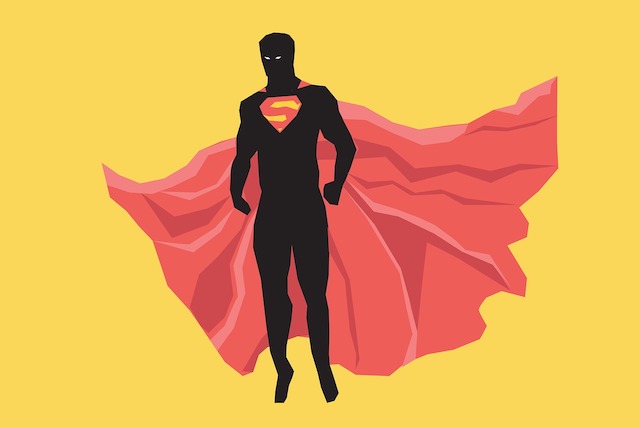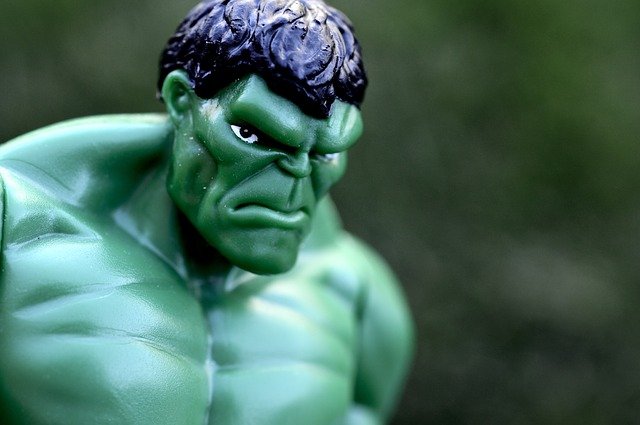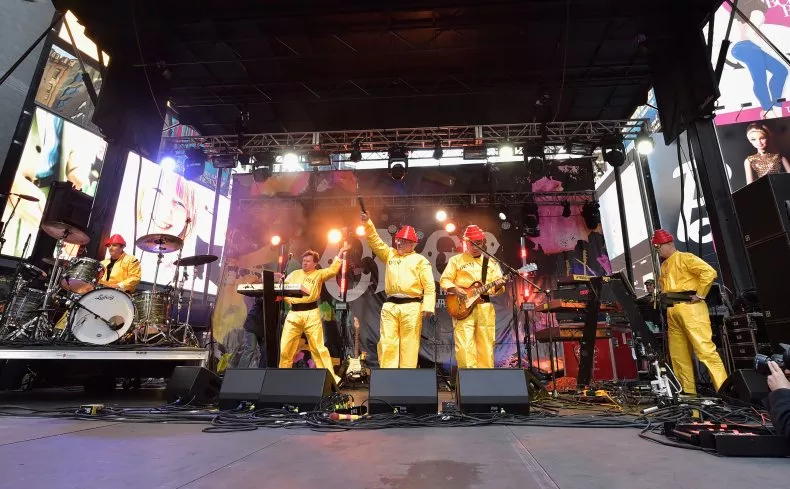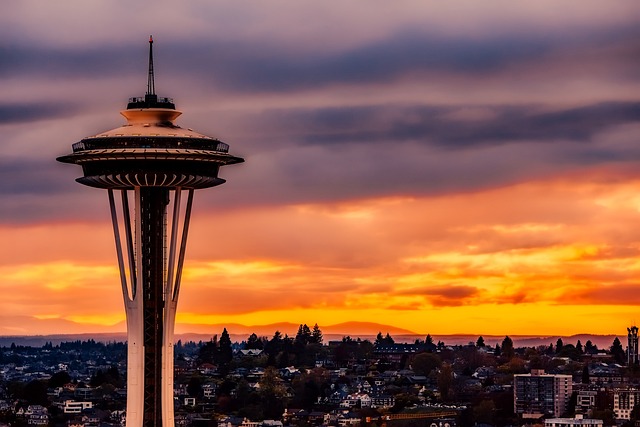10 Surprising Royalties Hidden in Everyday Life
You might think royalties are just something rockstars or authors get—but the reality is far more fascinating. If you own the rights to anything—a book, a song, a patent, a trademarked phrase, or even a strangely specific product design—and someone else wants to use it for profit, you could be entitled to a paycheck. Sounds simple, right?
Not quite.
While the basic idea is that you should get paid when others profit from your creation, the rules around royalties can be incredibly weird, technical, and at times, totally unexpected. In fact, there are people earning money for reasons you’d never guess—from owning the rights to a dance move, to licensing the sound of a roaring dinosaur. Yes, that actually happened.
And on the flip side, there are cases where people should be paid royalties… but aren’t, thanks to legal loopholes, expired protections, or obscure exceptions.
The world of royalties is a maze of intellectual property, where logic meets absurdity, and where the question isn’t just “Who owns it?” but “Who thought to register it first?”
10. Finnish Cab Drivers Must Pay Royalties for Playing Music

While taxis are a staple in cities around the world, every country has its own unique set of rules and regulations for how they operate. But Finland? Well, it takes things to a whole new level. In one of the strangest rulings ever, Finnish cab drivers are legally required to pay royalties if they play music in their cars. Yes, you read that correctly. If a taxi driver turns on the radio while ferrying passengers, they must pay for the songs that play.
Why? It all comes down to a 2002 court ruling that classified music played in a cab as a public performance. And just like any public performance—whether in a bar, restaurant, or concert hall—the driver is on the hook for royalties. Sounds unbelievable, right? But don’t worry—cabbies don’t need to keep track of every song that airs or report it in excruciating detail. Instead, they pay a simple annual fee of just £14 to the Finnish Composers’ Copyright Society. If they don’t want to pay, they have the option to just turn the radio off during their shifts.
9. Alice Cooper: The Surprising Story Behind the Name and Royalty Payments

Alice Cooper, a true rock icon, has been captivating audiences for decades. He was one of the pioneers in blending the horror aesthetic with showmanship in his music. This unique fusion was a game-changer, essentially giving birth to the entire “shock rock” genre. His influence can be clearly seen in the works of many subsequent artists like Marilyn Manson, Slipknot, and Gwar, to name just a few. Truly, he’s a trailblazer in the world of rock music.
But here’s something you might not know. Alice Cooper, whose real name is Vincent Damon Furnier, legally changed his name to Alice Cooper in 1975. Now, the story behind this name change is quite fascinating. Cooper once shared in a book that the popular myth about a medium using a Ouija board to spell out the name was completely untrue.
Instead, it seems that the name just randomly popped into his head. At that time, the band consisted entirely of men. Cooper thought this name would create confusing and interesting imagery for the fans. It was a name that had the potential to intrigue and draw in audiences, without a clear preconceived intention.
It’s important to note that the name “Alice Cooper” wasn’t initially his alone. It was, in a sense, a name for the band as a whole. As the frontman, he started to be widely recognized by this name. Even though it wasn’t exactly what was planned, he embraced it and ran with it.
However, this leads to an interesting twist. Since the name originally belonged to the band, Cooper now has to pay yearly royalties to the other members of the band to continue using it. It’s a unique situation that really shows the complex dynamics within a band and the significance of a stage name.
8. Paying Royalties for HDMI: The Hidden Cost Behind Your Favorite Devices

We all use HDMI cables—whether it’s to connect your gaming console, watch movies on a Blu-ray player, or stream content from a laptop to a TV. The HDMI (High-Definition Multimedia Interface) standard has become the go-to solution for transmitting high-quality video and audio. But here’s the catch: every time you plug in an HDMI-enabled device, someone, somewhere, is paying for the privilege of using that technology.
HDMI is a proprietary technology, and that means it comes with a price. Any company that wants to use HDMI in their products has to pay a royalty fee. The official HDMI consortium charges a base fee of around $10,000 per year for the right to incorporate the HDMI standard, with an additional $0.15 fee per unit sold. This can quickly add up, especially for large manufacturers.
However, there’s a bit of a discount: if the product displays the official HDMI logo, the royalty fee drops significantly to just $0.05 per unit. For small-scale manufacturers that make fewer than 10,000 units, there’s an even more affordable royalty plan, allowing them to avoid some of the larger fees.
If you’re gaming on your Xbox, watching a Blu-ray movie, or even just grabbing a random HDMI cable off the shelf, someone along the way has already paid for the rights to use HDMI technology. It’s just another example of how even the most commonplace technologies come with hidden costs that shape the products we use every day.
7. Climbers and the Royalties to Climb Everest: A Costly Ascent

For those with an adventurous spirit, the idea of climbing Mount Everest, the highest peak on Earth, can be an irresistible allure. It represents the ultimate adventure, a test of human endurance and determination. However, reaching the summit comes with a hefty price tag that many may not fully anticipate.
If you’re not a Nepalese citizen and dream of conquering Everest, you’ll need to be prepared to pay significant royalties to the Nepalese government for the privilege of climbing their majestic mountain. These costs can vary depending on the season you choose to embark on this arduous journey.
Spring is the most popular season for climbers, lured by the relatively milder weather conditions. But this peak climbing period comes with a substantial financial burden. As of now, if you plan to ascend Everest in the spring, you’ll be required to pay a royalty fee of $11,000. This is no small amount and can be a significant deterrent for some would-be climbers.
In addition to the royalty fee, climbers are also asked to contribute a $4,000 garbage management fee. The Nepalese government has implemented this fee to address the growing issue of waste left on the mountain by climbers. However, there is a glimmer of hope for those who are environmentally conscious. If you manage to bring back enough trash with you during your descent, you may be eligible for a refund of this garbage management fee.
The situation took an interesting turn in 2023. In an effort to control the increasing number of climbers and, more importantly, to address the rising death toll on the mountain, the Nepalese government proposed a significant increase in the royalty fee. The proposed new fee was set at $15,000. This increase is not without its reasons. The growing popularity of Everest climbing has led to overcrowding on the mountain, increasing the risks for climbers. By raising the fee, the government hopes to discourage some from attempting the climb, thereby reducing the strain on the mountain’s resources and potentially saving lives.
It’s important to note that this new fee won’t take effect immediately. Climbers who plan their expeditions in the near future won’t have to worry about the increased cost just yet. The new royalty fee of $15,000 is set to go into effect in 2025.
6. Why DC Pays Comics Creators Way More Than Marvel

If you’re into comic book movies, you already know that they are massive money-makers, raking in billions of dollars. Characters like Deadpool, Thanos, and Joker have become household names, mostly thanks to their adventures on the big screen. But here’s the real kicker—do the creators of these iconic characters, the writers and artists, actually get their fair share of that pie? Spoiler alert: not as much as you’d think.
Take Jim Starlin, for example. He’s the mastermind behind Thanos, the terrifyingly powerful villain in the MCU, as well as Gamora and Drax. Despite the fact that these characters have appeared in multiple blockbuster films, Starlin himself has been tight-lipped about how much Disney paid him for his creations. But it has been confirmed through multiple sources that Marvel/Disney typically hands over a meager $5,000 and, maybe, a ticket to the movie’s premiere.
Now, contrast this with DC Comics’ approach. Starlin has admitted that DC paid him far more for the use of the KGBeast character in Batman v Superman. You might be wondering, “Who is KGBeast?” Well, if you saw the movie, you probably didn’t even notice the character—he’s just a regular guy in the film, and they didn’t even refer to him by his iconic name. But DC, nevertheless, shelled out a much bigger royalty for even such a minor character.
And how much bigger? According to Starlin, the payment he received from DC for KGBeast was more than what Marvel paid him for all the Thanos-related films combined. Talk about a difference in how creators are treated!
5. Marvel’s Hidden Earnings from Hulk Hogan’s Wrestling Career

When we think about the world of comics and wrestling, there are some truly fascinating connections that often go unnoticed. Let’s delve into the intriguing story of how Marvel Comics managed to cash in on the fame of a wrestling legend.
The Incredible Hulk made its debut in 1962, firmly establishing itself as one of Marvel Comics’ oldest and most beloved characters. It appeared on the comic book scene even before some of Marvel’s other iconic characters like Spider-Man, Iron Man, and the X-Men. Over time, the name “Hulk” became inseparable from the image of the big green monster, a symbol of raw power and strength.
However, there was another “Hulk” that captured the public’s imagination in a different realm – professional wrestling. Hulk Hogan, whose real name is Terry Bollea, became a household name in the wrestling world. But here’s where things get interesting.
You see, while “hulk” might seem like a generic term that could be used to describe someone large and muscular, Marvel Comics held the rights to the specific persona of the big, muscley Hulk. So, for a whopping 20 years, Terry Bollea, better known as Hulk Hogan, was paying royalties to Marvel Comics for the privilege of using his stage name.
It all started back in the 1970s when Hogan appeared in a promotional photo with Lou Ferrigno. At that time, Ferrigno was playing the Incredible Hulk on TV. Somebody joked that Hogan, being taller and more muscular, was the “real” Hulk. And that nickname just stuck. Hogan carried it with him through several wrestling promotions until he eventually signed with the WWF (which is now known as the WWE).
Hogan was an instant sensation with the WWF. The organization was on the verge of becoming the dominant force in professional wrestling, and they knew a good thing when they saw it. They started introducing Hogan as the “Incredible Hulk Hogan.” As the crowds flocked to Madison Square Garden and other venues to watch his matches, Marvel Comics decided to step in.
At that point, Hogan was forced to drop the “incredible” from his name. And from then on, Marvel Comics started reaping the financial rewards. They received $100 for every match that Hogan wrestled. Over the course of 20 years, that added up to a significant amount of money. But that wasn’t all. Marvel also got a small portion of all the Hulk merchandise that was sold. It’s no wonder that this deal likely made Marvel millions.
4. Warner Paid Royalties to John Hinckley for a Devo Song

Sometimes, paying royalties is straightforward, especially when a musician samples someone else’s work. But what happens when the situation is, well, a bit more unusual? Enter the case of Devo and a song that led to Warner Music paying royalties to none other than John Hinckley, the man infamous for attempting to assassinate President Ronald Reagan.
In 1982, Devo released their song “I Desire”, which was a year after Hinckley made headlines for his assassination attempt. What made this song extra unsettling was that Devo chose to sample a poem Hinckley had written—one of his infamous love letters to Jodie Foster. Yes, you read that right. The band approached Hinckley and asked if they could use his poetry. He agreed, and in return, he became a co-writer of the song.
However, there was a catch. Warner, Devo’s label, didn’t realize the full scope of the situation until after the song was released. They had paid royalties for the use of the poem, but the revelation about Hinckley’s involvement didn’t come to light until much later. Fast forward to 2021, and Hinckley tweeted about how he hadn’t received any royalties for the song in decades, leaving many stunned at how this odd situation had played out.
3. The Seattle Space Needle: A Trademarked Icon with Usage Restrictions

When we think of cities and the visual symbols that define them, there are certain landmarks that immediately come to mind. For Seattle, the Space Needle is that iconic structure. It pierces the sky and gives the city a unique and easily recognizable profile. However, what many people may not realize is that this beloved landmark is not just a pretty sight; it’s a trademarked entity with specific usage rules.
If you’re considering using the image of the Space Needle to promote something in Seattle or for any commercial purpose, you can’t just go ahead and do so without consequence. The building is protected by trademark laws, which means that if you want to use its likeness, you’ll need to pay royalties. It’s a way for the owners of the trademark to maintain control over how their iconic symbol is used and to ensure that its value and integrity are preserved.
Just recently, in 2022, a coffee chain found itself at the center of a legal battle. The company that owns the Space Needle sued the coffee chain for trademark infringement. The details of the case might not be widely known, but what’s important is that the two companies eventually reached a settlement. This incident serves as a reminder of the significance of respecting trademarks, especially when it comes to well-known and beloved symbols like the Space Needle.
What about using an image of the Seattle skyline for commercial purposes? Well, Getty Images, a major source of stock images and information on intellectual property, points out that if the key feature of the skyline is the Space Needle, you’re not allowed to use it without permission. It’s not just the image that’s protected; even the name “Space Needle” is safeguarded. If a company comes across someone using the name commercially without authorization, they’ll ask that the person change it.
2. Alaskan Residents Get a Yearly Oil Royalty Check

If you’re a fan of free money (who isn’t?), but don’t mind it being a modest amount, you might want to consider moving to Alaska. The residents of the Last Frontier State are handed a yearly royalty check, just for living in a place brimming with oil. Sounds like a sweet deal, right?
In 2023, Alaskans were sent a check for $1,312, representing their share of the state’s oil wealth. But wait—it gets even more interesting! The year before, the payout was more than $3,000. The amount fluctuates every year, depending on the state’s oil fund and its management. However, that’s not to say it’s all smooth sailing. The process of distributing the funds is a maze of political red tape, with officials juggling the money to cover unexpected expenses like education and transportation shortfalls. It’s not as straightforward as you might think.
But despite the bureaucratic mess, Alaskans always end up with something in their pockets, making this a unique perk for living in the 49th state. Whether it’s a big check or a small one, residents can count on receiving their slice of the oil pie every year. It’s one of those little-known gems that makes Alaska stand out from the rest.
1. The Surprising Story of US Royalties to Germany for the Springfield Rifle

When we think about war, we often focus on the battles, the strategies, and the sacrifices. However, there’s a less-discussed aspect that involves the business side of things, and it’s quite a revelation. It turns out that during World War I, the United States was paying royalties to Germany for rifles based on the renowned German Mauser design.
The Mauser 98 is not just any rifle; it’s arguably the most famous one ever made. Its impact on the firearms industry is immense, with an estimated production of between 91 and 125 million units worldwide. Its design was so influential that countries around the globe, including the United States, decided to copy it.
This copying came with a cost. Governments, including the US, were paying royalties to Germany for the use of the Mauser design. In 1905, the US reached an agreement with Germany. Under this deal, the US would pay 0.75perrifle∗∗and an additional∗∗0.50 per thousand clips, with a maximum annual payment of $200,000.
But the US wasn’t content with just paying royalties indefinitely. They attempted to create their own version that could rival the Mauser while avoiding these royalty payments. Enter the Springfield M1903. The designers tried to duplicate the Mauser design but made some tweaks in the hope of sidestepping the royalty obligations.
However, their efforts didn’t yield the desired result in the long run. Despite these modifications, the US ended up in a situation where they were still paying a significant amount in penalties and fees to Germany. And what’s even more astonishing is that this continued even after the First World War had begun, while the US was still officially neutral.

























